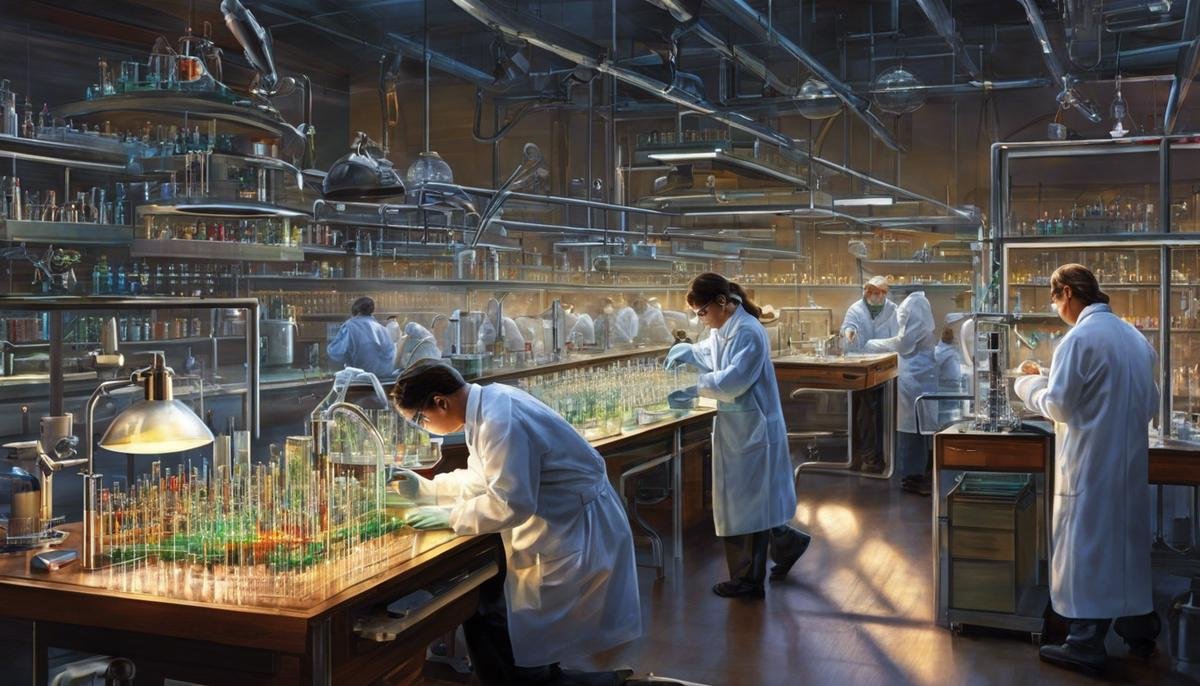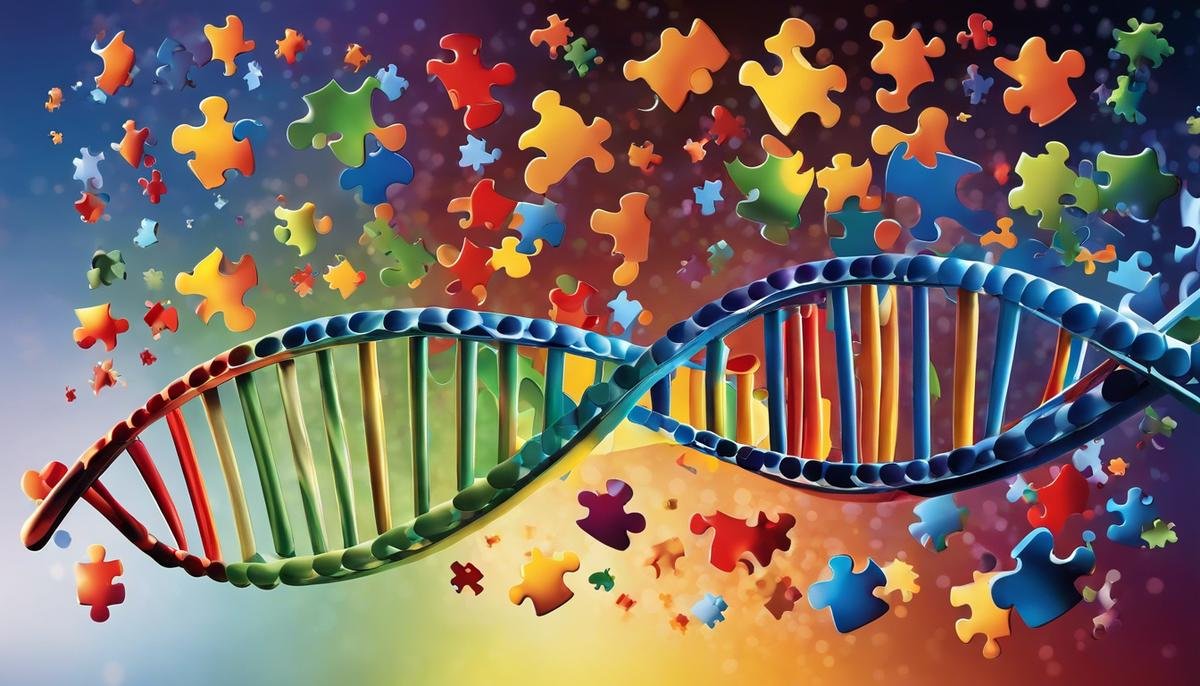
In the realm of healthcare science, biomedicine is swiftly rising to the forefront, revolutionizing treatment methods for myriad conditions, including Autism Spectrum Disorder (ASD). Historically, autism therapies and interventions have typically relied on behavioral and educational approaches. Yet, the advent of biomedicine, bolstered by the advancements in genomics, personalized medicine, and the integration of technology, promises a more targeted and effective trajectory for autism care. This transition is not only transforming the therapeutic landscape but also impacting societal norms and perspectives around autism, pushing the boundaries of our understanding and acceptance of neurodiversity.
The Rise of Biomedicine in Autism Treatment
Biomedicine: Unearthing New Possibilities in Understanding and Treating Autism
Embracing the beautiful array of differences in human beings is what makes the world spin, isn’t it? Especially as parents, we foster that belief tightly in our kids’ hearts. Among these arrays of uniqueness lie conditions that scientists, doctors, and families alike are still endeavoring to understand fully – autism is one such condition. Thankfully, strides are being made in biomedical research, lighting the way towards better understanding and managing autism. Let’s dive into how biomedicine is influencing our comprehension and treatment of this complex condition.
Biomedicine, to put it simply, is the branch of medicine that deals with the application of biological and physiological principles to clinical practice. The innovative field serves as an invaluable tool for investigating and making sense of intricate conditions like autism. The progress in the past few years alone has been remarkably encouraging.
One significant area where biomedicine has made strides is in early detection. A neurological disorder, autism’s core symptoms often emerge before a child turns three. Biomedical research is currently pushing the boundaries to identify biological markers that can detect autism at a much earlier stage. Detecting these signs at the initial phase can be crucial because early intervention has shown to greatly enhance an individual’s abilities and quality of life.
Further, biomedicine is taking posts at the frontlines when it comes to therapeutic approaches. Traditionally, managing autism is centered around behavioral therapies. However, ongoing biomedical research is unearthing other treatment avenues tied to the biological aspects of autism. Scientists are now focusing on the genetics of autism, which is bearing fruit in terms of new treatment strategies. For example, certain medications are showing potential in addressing underlying genetic and metabolic issues that could be contributing factors in autism.
Biomedicine is also doing wonders for understanding the gut-brain connection. There’s compelling evidence supporting a link between gut health and autism. Imbalances in gut flora are thought to exacerbate symptoms in autistic individuals. Interventions aimed at improving gut health, such as probiotics or dietary changes, have shown promise in managing autism symptoms, all thanks to the insights provided by biomedicine.
Lastly, there’s a heartening trend in biomedicine, moving away from viewing autism solely as a disorder that needs “fixing” towards a more acceptance-based approach. The focus is shifting towards helping individuals with autism lead fulfilling and meaningful lives.
It’s a hopeful time for families living with autism. Our ever-evolving understanding, driven by leaps in biomedical research, are consistently turning unknowns into knowns. The horizon is bright, full of exciting possibilities for a better understanding of autism and its treatment. Let’s continue to celebrate and embrace differences as we journey towards a more inclusive and understanding world.

Understanding Autism Genomics
Exploring Genomics: A New Frontier in Autism Care and Understanding
Autism is indeed a complex tapestry, woven with many strands, one of the most fascinating being genomics. Having delved into biomedicine’s numerous roles in understanding and tending to autism, it’s critical to discern how genomics, a subfield of genetics, continues to revolutionize our view and management of this condition.
Genomics doesn’t focus merely on single genes like traditional genetics. Instead, it considers the complete set of DNA; the whole genome. This comprehensive perspective can tell us a lot about how autism develops, behaves and, critically, how it might be managed more effectively.
In recent years, genomics has drastically changed the landscape of autism research and understanding. We’ve discovered that multiple genes are usually involved and interact with environmental factors to influence autism. It’s not a direct “one gene, one result” situation, but a complex interplay between numerous genetic and environmental elements.
Take, for instance, the recent breakthroughs in identifying “autism genes.” Through genomic studies, over 100 genes have been linked with autism, a vast leap from the few we previously identified. These genes range from impacting neurodevelopment to synaptic communication, helping us understand the diverse facets of autism. Additionally, genomics allows us to see how these genes interact and work together, a puzzle piece that was missing with traditional genetic studies.
Moreover, genomics can provide personalized insights, aiding us in designing individualized intervention strategies. Differences in genes often account for the wide range of behaviors and abilities exhibited by those with autism, the so-called “spectrum.” By analyzing an individual’s genome, we can tailor interventions to their unique genetic makeup, unlocking doors to potentially more effective therapies.
Also, genomics is reshaping the way we view genetic testing in autism. The technique of Whole Exome Sequencing (WES) has been rising in popularity, enabling us to examine the parts of the genome that provide instructions for creating proteins – the building blocks of the body. By sifting through these sequences, we can identify new genetic contributors to autism, continually enriching our knowledge of this intricate condition.
But how does this genomics fascination translate into practical application? Well, think about a future where genomic testing becomes a standard part of autism diagnosis and care. Imagine a world where each child diagnosed with autism undergoes genome sequencing. The insights gathered could not only enrich their own care process but also contribute to a vast pool of genomic data. With each passing day, this could enhance our understanding and create better, more personalized therapeutic strategies.
Delving into genomics feels like embarking on a voyage into the deep unknown, holding the promise of uncharted territories and unimaginable discoveries. While genomics continues its exploration, manifesting new insights on autism, what’s critical, as parents, caregivers, and advocates, is to adopt a balanced perspective. We must recognize genomics as a potent tool but not as an ‘absolute answer’ or ‘quick fix’ for autism.
At the end of the day, understanding and supporting loved ones with autism extend far beyond the genetic framework, and each individual’s unique intricacies and experiences cannot merely be reduced to their genomic blueprint. May we continue to navigate this journey with patience, grace, and most importantly, an unwavering commitment to cherishing our loved ones for the incredible individuals that they are. After all, as we’ve often heard, if you’ve met one person with autism, you’ve met one person with autism – and isn’t the diversity of the human experience something truly spectacular?

The Future of Personalized Medicine in Autism Care
Personalized medicine is making large strides, progressively playing an essential role in the future of autism care.
It is steadily bridging the gap between generalized practices and focused interventions.
One technology that has been pivotal in these advancements is genomics.
Unlike traditional genetics, which mainly focuses on individual genes, genomics evaluates all the genes and their interrelationships to better understand their combined influence on growth and development.
Autism research has greatly benefited from genomics.
Through its use, scientists have discovered multiple genes associated with autism, making it evident that autism is more complex than a one-gene, one-disease model.
This understanding has drastically shifted the approach towards autism care, embracing the concept of personalized interventions for enhanced efficacy.
Autism is reported to be a result of an interaction between genetic predisposition and environmental triggers.
Understanding this interplay has been made possible via genomics, accentuating its importance in autism care.
It has offered avenues for the development of biologic markers for early detection as well as individualized interventions based on a person’s genomic information.
Whole Exome Sequencing (WES) is another transformative genomics technology.
Used in genetic testing, WES analyses the protein-coding regions in the genome where most known disease-causing mutations occur.
This revolutionizing technology holds immense potential in the future of autism diagnosis and care.
It is hoped to not merely determine the risk factors, but also to pinpoint optimal treatments, paving the way for targeted autism therapies.
However, it’s vital to balance the weight of genomics with the bigger picture of autism and remember that although genomics offers monumental strides, it does not provide all the answers.
It’s merely a part of the intricate puzzle of autism.
The future of autism care is shifting in emphasis, now beginning to recognize the uniqueness and diversity of individuals with autism.
Personalized medicine suggests the possibility for treatment plans to be unique and catered to each individual’s genomic information and personal characteristics.
This calls for a change from the standardized approach of autism care, transitioning into the age of precision and personalized medicine.
In conclusion, personalized medicine is transforming the landscape of autism care, majorly due to the role of genomics research and testing.
It fosters the promise of a more nuanced and individual-level understanding, capable of enhancing the lives of those touched by autism gauged with a sense of hope, positivity, and the prospect of better care.

The Intersection of Technology and Autism Care
Stepping into Technology: A Brave New World in Autism Care
In the never-ending mission to unlock the secrets of autism and provide better care for those affected, technology is soaring to new heights. Today, a revolution is rising within the field of autism care. We see apps, online platforms, devices, and more, all driven by advanced technology, redefining the landscape of autism care. Let’s talk about the ways technology is innovating, transforming, and enhancing the pathways to autism care.
One of the most widely recognized ways technology is impacting autism care is through accessible, convenient and innovative assistive technology. These tech tools, which include AAC devices, apps, and software, are aiding in communication like never before. From providing non-verbal individuals with autism a voice, to initiating social interactions, assistive technology paves the way for more inclusion, better understanding, and profound connection with the rest of the world.
Another game-changer in autism care is the rise of technological solutions for teaching and therapy. Computer programs and other tech-based tools are now assisting educational professionals in teaching essential life skills, better communication, and even social interaction to individuals with autism. Interactive games and programs encourage these individuals to learn while having fun, whilst VR technology helps teach them how to navigate real-world scenarios.
In addition, technology is also playing a vital role in advancing the research about autism. Machine learning and artificial intelligence are becoming increasingly influential in interpreting and analyzing vast amounts of data on autism – thereby making strides in understanding this complex condition better.
Technology, moreover, is empowering families and caregivers through online support and resources, offering the much-needed community connection. From online forums, webinars, and blogs to autism-tracking apps and digital health records, amplified digital outreach introduces limitless potentials for sharing experiences, gaining knowledge, promoting acceptance, and garnering support.
There’s no denying the impact wearable tech holds for autism care. These smart devices could potentially enhance caregiver’s abilities to monitor behavioral patterns and sleep habits or detect emotional stress signals of their loved ones with autism. It’s certainly a breakthrough that could offer proactive and personalized care solutions.
Lastly, the integration of telemedicine for autism care is offering more accessible, more efficient, and more comprehensive care. This technology eliminates geographical constraints, makes interactions more process-friendly, and streamlines ongoing therapy – making it a promising development in the field of autism care.
In essence, the growth of technology within autism care is opening doors to a world of possibilities. It’s not only simplifying the day-to-day challenges but is broadening our understanding of autism in general. The progression is ongoing, the potential unbounded. As technology forges new ways forward, the hope for better, more comprehensive, and most importantly, personalized autism care, shines brighter than ever before. Every breakthrough, every discovery, and every innovation marks a step closer to embracing and empowering the diverse and unique individuals with autism.
It’s indeed heartwarming to witness technology and innovation extending their hands in reverence and support of the beautiful minds living with autism. Let’s celebrate this digital revolution, as we continue our quest for love, understanding, and acceptance for all those on the spectrum.

Societal Implications of Biomedical Approaches to Autism
The world of biomedicine is ever-evolving, and its impact on autism is as profound as it is indisputable.
Lately, the focus has been on bringing these biomedical insights into action more effectively to help countless families around the globe.
In this scenario, let’s see how trends in autism research and interventions hold societal implications.
Talks about autism and biomedicine often veer towards genetics and genomics.
Yet, many people overlook the considerable societal implications of this development.
There’s a lot to discuss here, from reframing public perception to fostering more acceptance and inclusion for individuals with autism.
Firstly, developments in biomedicine and genomics have allowed professionals to provide a more nuanced, individualized understanding of each person with autism, transitioning away from older, more generalized modes of comprehension that often viewed autism as a monolith.
Reminder: each person with autism has their own unique experiences and challenges.
With genomics-based diagnostics and therapy, this uniqueness can be recognized, celebrated, and attended to with more precision.
The implication? Potentially the beginning of the end of cookie-cutter interventions and more support for diversity within the spectrum.
The change is gradual, but the hope provided by this shift cannot be understated.
Promoting understanding about the diversity prevalent within autism not only fosters acceptance but also helps dispel harmful stereotypes that often circumscribe the lives of individuals with autism.
Then comes the impact of technological advancements on society’s understanding and approach towards autism.
From assistive communication devices to online support communities, technology is an increasing presence in the lives of families navigating the waters of autism.
Imagine being able to bridge communication gaps, ease day-to-day challenges, and access world-class therapeutic resources right from home!
The ability to mitigate the effects of autism, while also improving the quality of life for affected individuals and their families, holds significant societal implications.
Moreover, technologies are bringing insights into autism outside of clinical circles and into public consciousness.
As more people get informed and begin to comprehend the complexities and unique experiences that come with autism, societal acceptance and inclusion only stand to increase.
Finally, let’s talk about something that often slips under the radar – the importance of not just acknowledging the progress achieved through biomedicine but also the challenges that remain.
There’s a lot of hope, sure, but there’s also a need for considerable research and innovation still.
Simultaneously, the focus should not blur from the lived experiences of those with autism and their families.
Genomics, personalized interventions, technology – let’s make sure all of these empower the autism community without forgetting the bigger picture.
The societal implications of the trends in autism biomedicine cannot be understated.
And as these advancements open up new vistas of possibility, they come with a definitive societal message – the need for empathy, understanding, and above all, acceptance, in paving the way for a more inclusive world.

As we navigate the trails of this biomedical revolution, it becomes crucial to consider the societal implications that encompass the realms of data privacy, healthcare equitability, and the perception of neurodivity. As with any new frontier, the landscape of autism biomedicine presents both remarkable promises and critical questions. Yet, the potential inherent in these advancements – the possibility of providing more precise, effective treatment for those on the autism spectrum – offers an inspiring vision for the future. As technology, science, and compassionate consideration converge, the hope is for a tomorrow where every individual with autism has access to the personalized, targeted care that best supports their unique journey.




